
Vicki Goldberg is an American photography critic, author, and photo historian based in New Hampshire, United States. She has written books and articles on photography and its social history.

Vicki Goldberg is an American photography critic, author, and photo historian based in New Hampshire, United States. She has written books and articles on photography and its social history.
Born in St. Louis, Missouri, Goldberg earned a master's degree in art history from New York University Institute of Fine Arts.
Goldberg's books include The Power of Photography: How Photographs Changed Our Lives; Light Matters (a selection of her essays); and The White House: The President's Home in Photographs and History; as well as editing the anthology Photography in Print: Writings from 1816 to the Present. Her first biography, Margaret Bourke-White, took an in-depth look at the life and techniques of Margaret Bourke-White, a photographer active in the early to mid-20th Century.
Goldberg co-wrote A Nation of Strangers: Essays with Arthur Ollman, and American Photography: A Century of Images with art historian Robert Silberman. [1] She has also written introductions to a number of photographic monographs.
Margaret Bourke-White and The Power of Photography were included in the American Library Association's lists of best books of their respective years. In 2006, Photography in Print was named by The Wall Street Journal one of the year's five best books on photography.
Goldberg has written for The New York Times and Vanity Fair. She has lectured in Belgium, England, France, China, Korea, Norway and Portugal as well as America. She currently works as a freelance writer and lecturer.
In 1997, she received the International Center of Photography's Infinity Award. [2] In 1999, she received the Royal Photographic Society's J Dudley Johnston Award. [3]
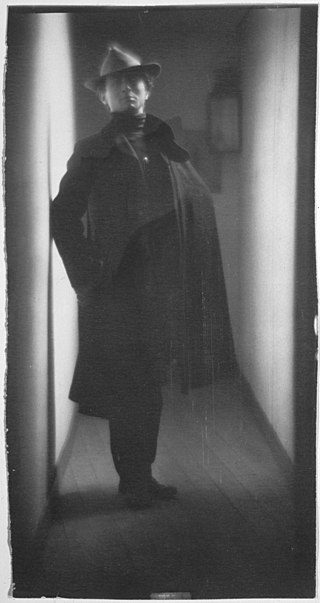
Edward Jean Steichen was a Luxembourgish American photographer, painter and curator and a pioneer of fashion photography. His gown images for the magazine Art et Décoration in 1911 were the first modern fashion photographs to be published. From 1923 to 1938, Steichen served as chief photographer for the Condé Nast magazines Vogue and Vanity Fair, while also working for many advertising agencies, including J. Walter Thompson. During these years, Steichen was regarded as the most popular and highest-paid photographer in the world.
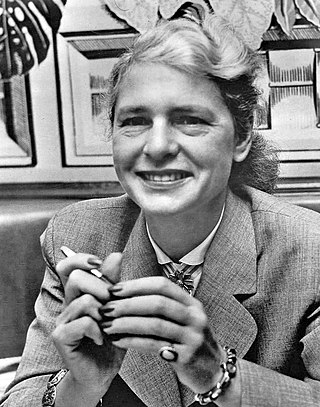
Margaret Bourke-White was an American photographer and documentary photographer. She was the first foreign photographer permitted to take pictures of Soviet industry under the Soviets' first five-year plan, was the first American female war photojournalist, and took the photograph that became the cover of the first issue of Life magazine.

Hansel Mieth (1909–1998) was a German-born photojournalist who worked on the staff of LIFE Magazine. She was best known for her social commentary photography which recorded the lives of working class Americans in the 1930s and 1940s.

Fine-art photography is photography created in line with the vision of the photographer as artist, using photography as a medium for creative expression. The goal of fine-art photography is to express an idea, a message, or an emotion. This stands in contrast to representational photography, such as photojournalism, which provides a documentary visual account of specific subjects and events, literally representing objective reality rather than the subjective intent of the photographer; and commercial photography, the primary focus of which is to advertise products or services.

Thérèse Bonney was an American photographer and publicist. She was best known for her images taken during World War II on the Russian-Finnish front. Her war effort earned her the decoration of the Croix de Guerre in May 1941, and one of the five degrees the Légion d’honneur. She published several photo-essays, and was the subject of the 1944 True Comics issue "Photo-fighter."

Francesca Stern Woodman was an American photographer best known for her black and white pictures featuring either herself or female models.
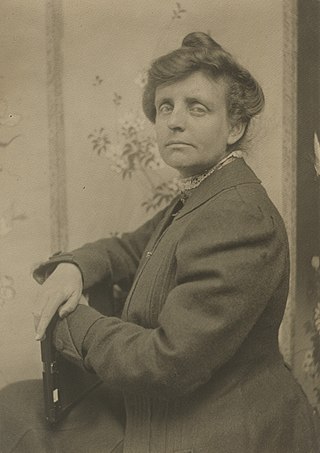
Frances Benjamin Johnston was an American photographer and photojournalist whose career lasted for almost half a century. She is most known for her portraits, images of southern architecture, and various photographic series featuring African Americans and Native Americans at the turn of the twentieth century.
Beaumont Newhall was an American curator, art historian, writer, photographer, and the second director of the George Eastman Museum. His book The History of Photography remains one of the most significant accounts in the field and has become a classic photographic history textbook. Newhall was the recipient of numerous awards and accolades for his accomplishments in the study of photo history.
Jim Goldberg is an American artist and photographer, whose work reflects long-term, in-depth collaborations with neglected, ignored, or otherwise outside-the-mainstream populations.

Anne Wilkes Tucker is an American retired museum curator of photographic works. She retired in June 2015.

Philip Gefter is an American author and photography historian. His books include Cocktails with George and Martha: Movies, Marriage, and the Making of Who's Afraid of Virginia Woolf?; What Becomes A Legend Most, the biography of Richard Avedon; and Wagstaff: Before and After Mapplethorpe, the biography of Sam Wagstaff, for which he received the 2014 Marfield Prize, the national award for arts writing. He is also the author of George Dureau: The Photographs, and Photography After Frank, a book of essays published by Aperture in 2009. He was on staff at The New York Times for over fifteen years, where he wrote regularly about photography. He produced the 2011 documentary film, Bill Cunningham New York.
Ian Jeffrey is an English art historian, writer and curator.
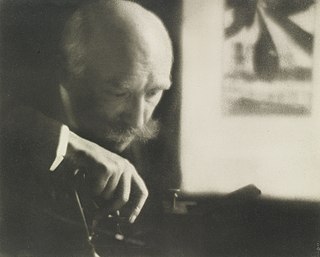
Pierre Dubreuil was a French photographer, born in Lille, who spent his career in France and Belgium. As a pioneer of modernist photography, Dubreuil embraced innovative techniques and ideas that were celebrated, criticized, and at times, overlooked. Over the course of his career, which was interrupted by both World Wars, Dubreuil's work was shown at the Photo-club de Paris, the Albright Gallery exhibition in Buffalo, New York, the Little Gallery of the Amateur Photography Magazine in London, and the Royal Photographic Society. In 1988, more than forty years after Dubreuil's death, photographer and collector Tom Jacobson revived interest in his work, seeking out long-forgotten and displaced works that culminated in an exhibition at the Musée d'Art Moderne, Centre Georges Pompidou in Paris.
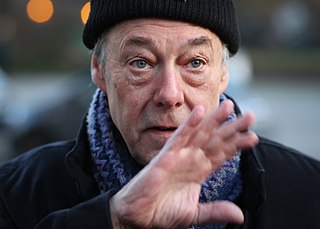
Gerald David "Gerry" Badger is an English writer and curator of photography, and a photographer.

The participation of women in photography goes back to the very origins of the process. Several of the earliest women photographers, most of whom were from Britain or France, were married to male pioneers or had close relationships with their families. It was above all in northern Europe that women first entered the business of photography, opening studios in Denmark, France, Germany, and Sweden from the 1840s, while it was in Britain that women from well-to-do families developed photography as an art in the late 1850s. Not until the 1890s, did the first studios run by women open in New York City.

Visual Studies Workshop (VSW) is a non-profit organization dedicated to art education based in Rochester, New York, in the Neighborhood of the Arts. VSW supports makers and interpreters of images through education, publications, exhibitions, and collections. VSW houses a bookstore, microcinema, exhibition gallery, and research center, and hosts artists-in-residence.
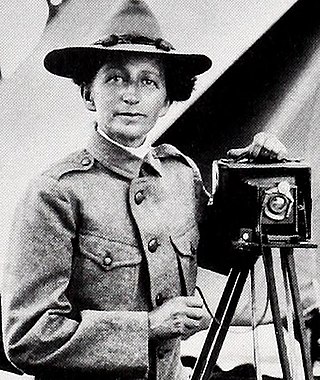
Mary Bayard Morgan Wootten (1875–1959) was an American photographer. She named Pepsi Cola and created its logo for her neighbor Caleb Bradham, who invented the drink. Wootten was the first woman in the National Guard. She opened six photographic studios,and raised two children after her husband left her for the Gold rush. The Wootten-Moulton museum will be opening in New Bern North Carolina soon in an historic home on East Front Street by Anthony Lilly and Ashley Norman. https://nyti.ms/2FrDvgB

Jungjin Lee is a South Korean photographer and artist who currently lives and works in New York City.

This is a timeline of women in photography tracing the major contributions women have made to both the development of photography and the outstanding photographs they have created over the 19th, 20th and 21st centuries.
Jonathan Green is an American writer, historian of photography, curator, teacher, museum administrator, photographer, filmmaker and the founding Project Director of the Wexner Center for the Arts. A recognized authority on the history of American photography, Green’s books Camera Work: A Critical Anthology (1973) and American Photography: A Critical History 1945–1980 (1984) are two notable commentaries and frequently referenced and republished accounts in the field of photography. At the same time Green’s acquisitions, exhibitions and publications consistently drew from the edges of established photographic practice rather than from its traditional center. He supported acquisitions by socially activist artists like Adrian Piper and graffiti artist Furtura 2000, and hosted exhibitions on Rape, AIDS, new feminist art, and the work of photographer, choreographer and dancer Arnie Zane, the Diana camera images of Nancy Rexroth, the Polaroids and imitation biplanes of folk artist Leslie Payne, and the digital photographic work of Mexican photographer Pedro Meyer. This alternative focus help prime Green and the competition jury to choose an unconventional, deconstructive architect, Peter Eisenman, previously known primarily as a teacher and theorist, as the architect for the Wexner Center for the Arts. Green has held professorial and directorial positions at Massachusetts Institute of Technology, Ohio State University, and University of California, Riverside.